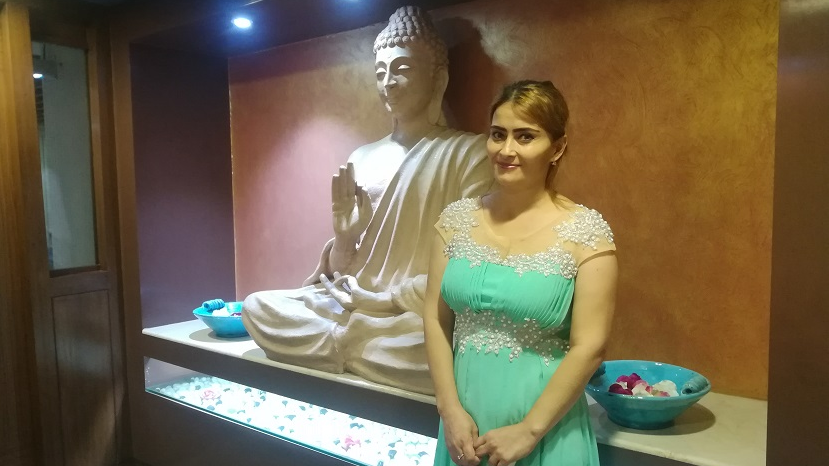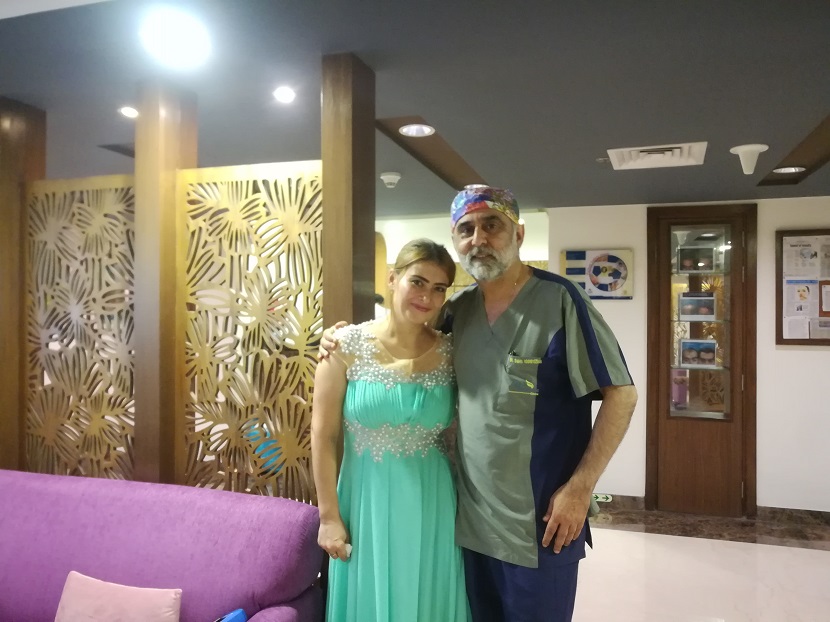
Gulnora Rapikhova
Gulnora Rapikhova, 38, lives in a village near Sirdarya region in Uzbekistan. The second of her five siblings, her father retired as a security guard.
She was 5 when she sustained burn injuries on her hips and thigh when her clothes caught fire from a lit gas stove in her home in Sirdarya. The burns were severe but there was no treatment available in her village. The family saw many doctors, she was admitted to a hospital near her village for more than a year, but to no avail.
Young Gulnora resigned herself to her fate. She stopped complaining about the pain to her parents and devised her own methods to deal with it. To stop the bleeding from the wounds, she would use the cotton towel and tape it around her hips.
She would keep standing the whole day and would lie down on her stomach when tired. She would keep herself busy to forget the niggling pain. "Initially, I used to get tired standing. My legs would hurt, but slowly I gained strength in my legs and standing for long durations did not hurt anymore," she says, in Uzbek, talking through a translator.
Her local school made special provision for her so that she could lie down on her sides in the class. She loved going to school, where she had fun with her friends.
“My friends and my sisters got married. And I didn't have much work at home. I could not pursue my studies after school because of my inability to sit in the class,” says Gulnora. “I liked to dress up. I used to stitch my own dresses. I have a sewing machine that I can operate while standing. I would wear make-up and colour my hair. That's how I fought loneliness."
Lately, her family started noticing some changes in her behaviour. Her cousin said Gulnora became moody. "Perhaps, she had started feeling left out," says Diloram, her cousin.
One day when Gulnora went to a local doctor for her periodic dressing, the doctor told her about a free medical camp being organised by some Indian cosmetic surgeons near her village. They asked her to meet the doctors.
She went to the camp and met Dr Shahin Nooreyezdan, who thought she had come for some regular cosmetic treatment such as botox or fillers. But when she refused to sit, Dr Nooreyezdan realised that there was something serious. “Her whole hips and thighs had severely infected wounds. I couldn't believe when she told me that she had been living with these wounds for the last 32 years. They were infected to an extent that I was almost sure that they would have turned into skin cancer, " says Dr Nooreyezdan, senior consultant, Plastic and Cosmetic surgery, Indraprastha Apollo Hospital, New Delhi “I advised her family to bring her to India.”
 Dr Shahin Nooreyezdan wityh Gulnora
Dr Shahin Nooreyezdan wityh Gulnora
But the cost of treatment's cost was beyond her. So, the doctor helped her raise funds for the treatment through some NGOs.
"He gave me a letter saying that I needed to come to India for my treatment, reviving my hopes. But I didn't hear from them for two months and got anxious again. And finally, one day I got a letter and my tickets to fly to India," says Gulnora. The family had to make arrangements. One of the many problems was no one in the family knew any other language than Uzbek. “I had been asked to be accompanied by someone who understands English or Russian to be able to communicate with the doctors in India. So my mother requested my cousin sister and her husband. They live far but still, she agreed to travel with me for my treatment."
In India, the treatment began with multiple biopsies that confirmed that the wounds were severely infected, and not cancerous. It made the surgeons' job easy. The surgery, two hours long, was simple-- the doctors removed the infected part and replaced it with skin grafts from her legs."The first time, I told her that she could sit and asked her to sit, she could not believe it," says Dr Nooreyezdan.
"As a doctor, I often witness some extraordinary, unexplainable events. This was one such case. Thirty- two years were a long time for a wound like that to cause a severe life-threatening condition but it is a miracle that her body somehow kept fighting it, and it didn't pose threat to her life. And she changed me with her exceptionally positive attitude towards life," says Dr Nooreyezdan.